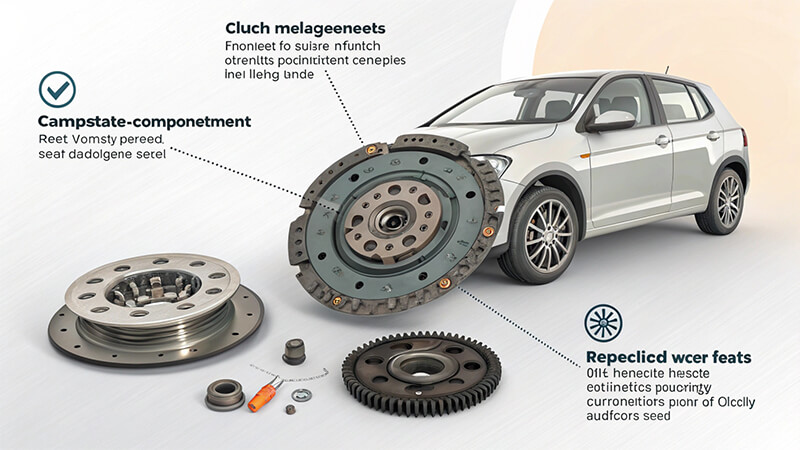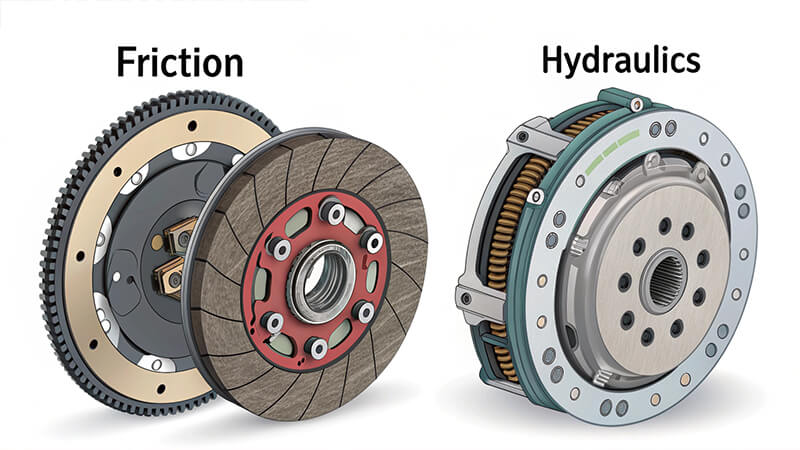Replacing a clutch can be tricky and costly. The process involves several steps that, if not executed properly, could lead to significant issues.
Improper clutch installation or faulty parts can result in vehicle performance issues, frequent breakdowns, and increased repair costs.
Stay with me as I uncover common problems, their causes, and practical solutions to make your clutch replacement smoother and stress-free.
What can go wrong when replacing a clutch?
Replacing a clutch might seem straightforward, but improper execution can turn it into a costly mistake.
Key issues include misaligned components[^1], incomplete inspections, or using incompatible parts[^2], all of which can lead to clutch failure or performance problems.
When replacing a clutch, problems often arise due to oversight or insufficient expertise. For instance, a misaligned clutch assembly[^3] can strain the gearbox or lead to uneven wear. Additionally, using non-OEM parts[^4] might not fit the vehicle’s specifications, resulting in operational issues.
Common Clutch Problems and Symptoms
| Problem | Symptoms | Solutions |
|---|---|---|
| Misalignment | Difficulty in gear shifting | Recheck and adjust alignment |
| Faulty hydraulic system | Spongy or loose clutch pedal | Inspect and replace cylinders |
| Worn-out pressure plate | Slipping clutch | Replace with quality parts |

What is the most common defect of a clutch?
A worn-out clutch disc[^5] often causes poor performance and safety concerns.
The clutch disc, subjected to constant friction, is a frequent point of failure, leading to slipping and reduced power transmission.
The most common clutch defect arises from wear and tear on the clutch disc. This can be accelerated by aggressive driving habits[^6], heavy loads, or lack of maintenance. While this issue is typical, it’s essential to address it promptly to prevent related problems like damaged flywheels or pressure plates.
Types of Clutch Failures
- Friction-related failures: Overheating and glazing.
- Hydraulic issues: Leaks in master or slave cylinders.
- Mechanical failures: Broken springs or linkage.
What are two basic ways a clutch fails?
Clutches fail primarily due to friction wear[^7] or hydraulic malfunction.
Friction wear reduces grip, causing slippage, while hydraulic failures affect engagement and disengagement precision.
The two basic ways clutches fail are through friction and hydraulics. Friction issues result from wear on the clutch disc and flywheel. Over time, the materials lose their effectiveness, leading to slippage and inefficient power transfer. Hydraulic problems, such as leaks or air in the system, disrupt pressure and make the clutch pedal feel loose or spongy.

What Happens When Your Clutch Fails While Driving?
- Loss of power to the wheels.
- Difficulty shifting gears.
- Potential for complete breakdowns on the road.
What to expect after replacing a clutch?
After clutch replacement, adjustments and a break-in period are necessary for optimal performance.
Post-replacement, you may notice changes in pedal feel[^8], smoother shifts, and improved vehicle responsiveness. Break-in ensures longevity.
After replacing a clutch, expect some differences. The pedal might feel stiffer or softer, depending on the type of clutch installed. Smooth gear shifts and better power transfer indicate a successful installation. However, it’s crucial to allow a break-in period of 500–1,000 miles to ensure the components seat correctly and achieve maximum lifespan.

Maintenance Tips After Clutch Replacement
- Check and adjust clutch pedal play.
- Inspect for any hydraulic fluid leaks.
- Monitor for unusual noises or slipping during the break-in period.
Conclusion
Replacing a clutch is essential but challenging. Here's a recap:
- Misalignment and non-OEM parts are common issues.
- Worn clutch discs lead to slippage and performance loss.
- Friction wear and hydraulic failures are primary failure types.
- Post-replacement adjustments ensure smooth operation.
- A proper break-in period extends clutch life.
Clutch replacement requires precision and attention to detail for lasting results.





